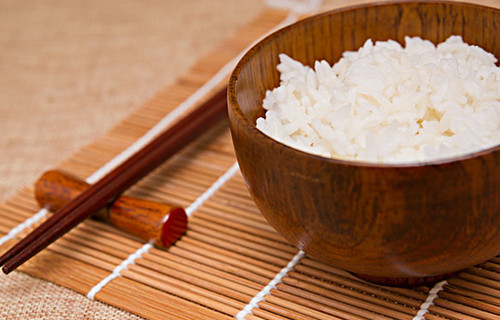导读:最新研究显示,距今约1万年前,水稻在长江下游地区开始驯化,这进一步确立了中国早期水稻驯化在世界农业起源中的地位。

Rice, one of the world’s most important staple foods sustaining more than half of the global population, was first domesticated in China about 10,000 years ago, a new study suggested Monday.
水稻,是世界最重要的主食之一,养活了全球一半以上的人口。据星期一的一项最新研究显示,它最早在10000年前被中国驯化。
"Such an age for the beginnings of rice cultivation and domestication would agree with the parallel beginnings of agriculture in other regions of the world during a period of profound environmental change when the Pleistocene was transitioning into the Holocene," Lu Houyuan, professor of the Institute of Geology and Geophysics at the Chinese Academy of Sciences, who led the study, said.
中国科学院地质与地球物理研究所吕厚远教授领导了这项研究,他表示,“水稻种植与驯化如此早的时间,与世界上其他地区主要农作物开始驯化的时间基本同步,在这段时期内,更新世向全新世过渡,环境发生了显著的变化。”
The research, published in the U.S. Proceedings of the National Academy of Sciences, was done in collaboration with Zhejiang Provincial Institute of Relics and Archaeology and the Institute of Geographic Sciences and Natural Resources Research at the Chinese Academy of Sciences.
这项研究由浙江省文物考古研究所、中科院地理科学与自然资源研究所合作完成,发表在美国《国家科学院学报》上。
Questions surrounding the origin and domestication of rice have led to a lot of debate in the last decade.
关于水稻的起源和驯化问题,在过去的十年间发生了诸多争论。
Rice remains have previously been recovered from the Shangshan site in the Lower Yangtze of China and recognized as the earliest examples of rice cultivation.However, the age of the rice fossils was derived through radiocarbon dating of organic matter in pottery shards, which can be contaminated with older carbon sources, Lu said.
此前,水稻化石在中国长江中下游上山遗址被提取到,最认为是水稻种植最古老的例子。然而,对其年代的判断多来自从陶片中提取有机物的放射性碳测年结果,这类材料容易受古老的碳源的污染,据吕教授介绍。
To constrain the age of the phytoliths, the researchers developed new ways of isolating rice phytoliths from carbon sources, such as clays and carbonate, and dated the samples directly using radiocarbon dating.It turned out that phytoliths retrieved from the early stage of the Shangshan site are about 9,400 years old.
为了限制植物岩的年龄,研究人员开发了一种新的方法,将水稻的植物岩从碳源中分离出来,例如粘土和碳酸盐,并直接使用放射性碳测定年代来测定样品。原来从上山遗址早期提取的植物岩约有9400年的历史。
Further studies showed that approximately 36 percent of rice phytoliths at Shangshan had more than nine fish-scale decorations, less than the approximately 67 percent counted from modern domesticated rice, but larger than the approximately 17 percent found in modern wild rice.
进一步的研究表明,上山遗址大约36%的水稻植物岩有超过九条鱼鳞斑装饰,将近67%的水稻植物岩含有现代驯化水稻,比现代野生稻子中的17%的比例要高。
That means that rice domestication may have begun at Shangshan at about 10,000 years ago during the beginning of the Holocene, when taking into account the distance between phytolith samples and the lowest bottom of cultural strata of the site as well as a slow rate of rice domestication, Lu said.
吕厚远说,考虑到上山遗址早期植物岩的样本离最下部地层底部的距离,以及水稻缓慢驯化的速率,这意味着,水稻开始在上山遗址驯化的年代应该大致在距今约1万年前的全新世开始时期。
The time coincided with the domestication of wheat in the Near East and maize in northern South America, both of which are also believed to have occurred at about 10,000 years ago, when the global climate experienced dramatic changes from cold glacial to warm interglacial.
这个时间与中东的小麦、中美洲的玉米开始驯化的时间基本同步,它们都发生在约10000年前,当时全球气发生显著变化,从寒冷的冰川过渡到了暖湿的间冰期。







